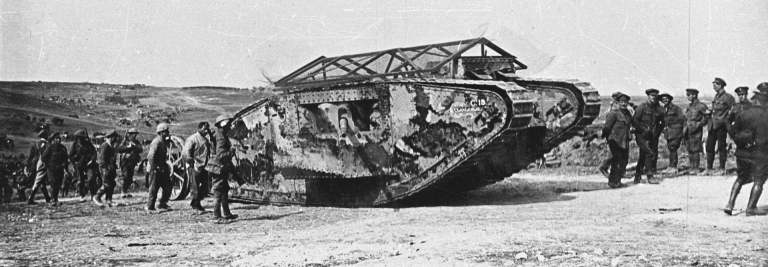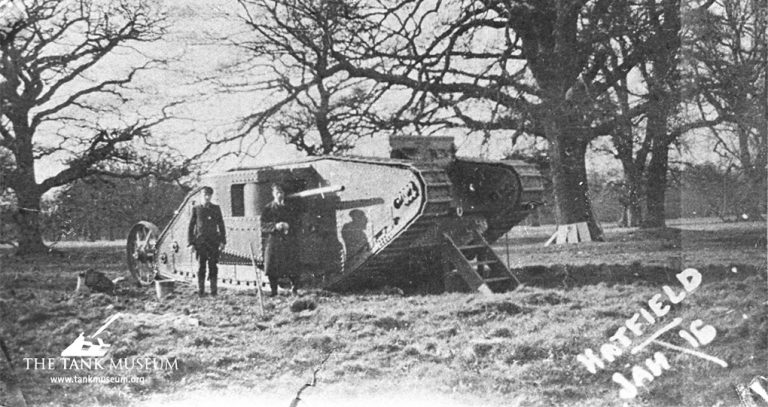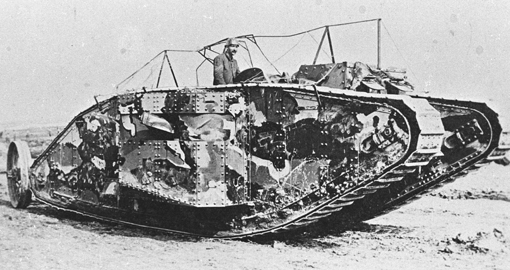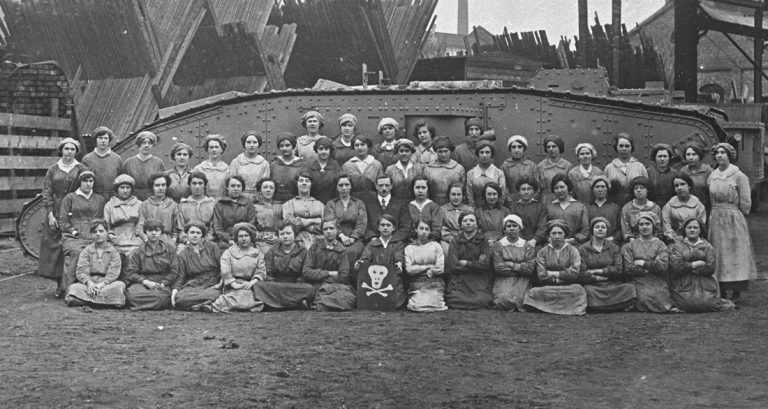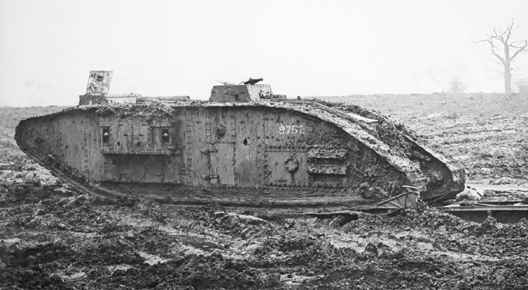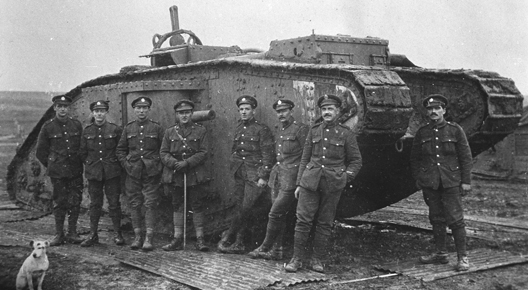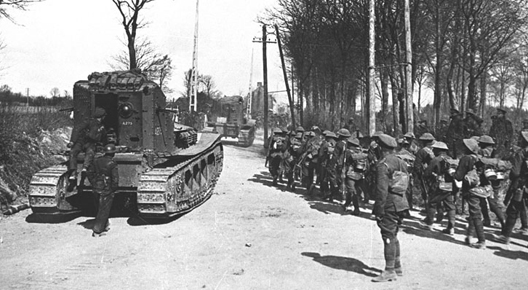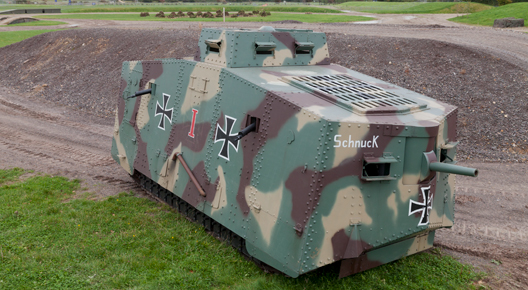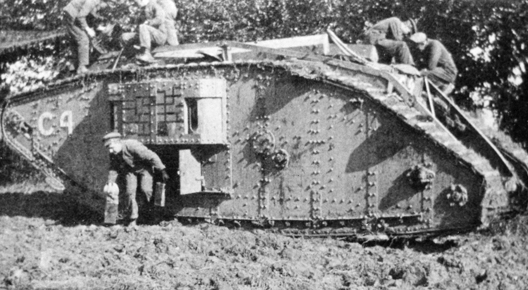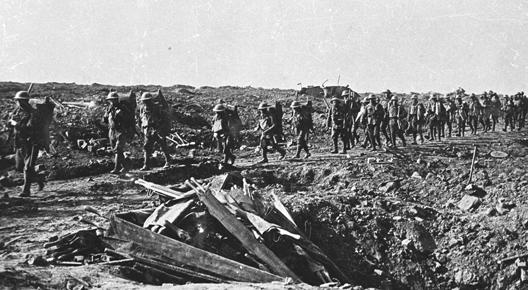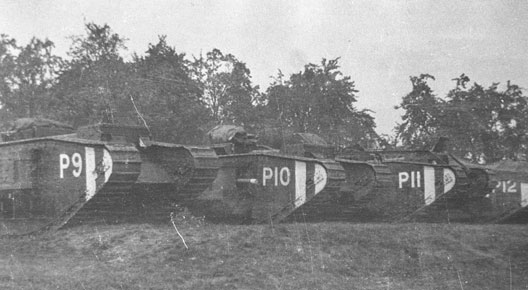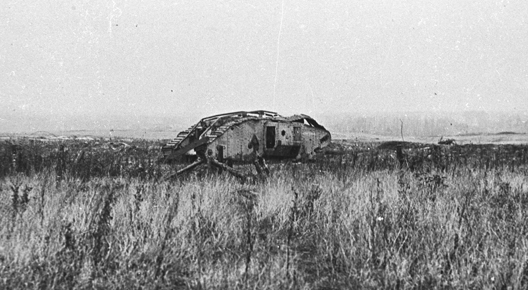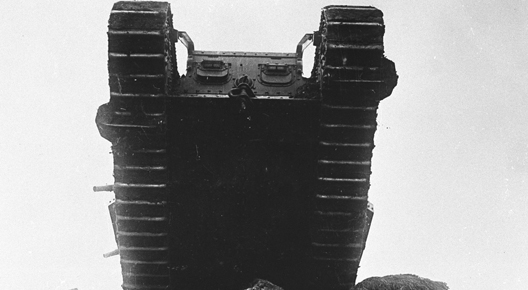The Battle of the Somme commenced with a vast British attack on 1 July 1916. On that first day of battle, the bloodiest in the history of the British Army, there were over 57,000 British casualties….
The First Tank Trials at Hatfield
Before the tank made its debut in France, the Mark I had to undergo trials and approval stages in Britain. These took place at Hatfield Park. …
Camouflage & Paint in WWI
Tank camouflage is a constantly changing art, depending on landscape, climate and season, among other issues. This article examines the development of tank camouflage during the First World War. …
Building the Mark IV
While historians mainly concentrate on tanks in battle, building armoured vehicles is equally fascinating. Learn how the most produced tank of the First World War was made….
The Mark V*
The Mark V* tank was created for one purpose – its extra length….
Mark V
On the 18th January 1918 the first Mark V tank was driven out of the Metropolitan Carriage, Wagon and Finance Company factory in Birmingham. Just 10 weeks later in early April 8th Battalion Tank Corps began training with the new tank at Humieres. It was a significant step forward from their old Mark IVs….
The Renault FT – Development and Combat Debut
On the 31st May 1918 the Renault FT was used in action for the first time at Ploissy-Chazelle, southwest of Soissons….
Action Debut of the Whippet Tank
On 26 March, 1918, the Medium A Whippet tank saw its first battle action, when it took a mass of German infantry by surprise….
Action Debut of The A7V
The first action of the German A7V tank, on 21 March 1918, is not very well known from the British side. Probably because most of those in action against them were either killed or captured and very little information reached the British authorities at the time. However we now have a German account to work…
Savage Rabbits
In early 1918 the Allies awaited a German attack. Defeating it would be a practical military challenge for the entire British Army, but it also posed a more existential problem for the Tank Corps. …
The Situation in 1918
Looking back from 2018, we know that the First World War ended with an Allied victory in November 1918. However back then, as 1917 ended and the New Year dawned, the Allies saw their position as perhaps the worst it had been for a long time. The Germans, on the other hand, had a small…
Tank Numbers
Like all military and civilian vehicles before and since the First World War, British tanks were given unique registration, or serial, numbers. …
Richard Wain at Cambrai
Richard William Leslie Wain was the second of four Tank Corps soldiers to be awarded the Victoria Cross during the First World War. …
The Battle of Cambrai: The Fascine
One of the adaptations added during the Battle of Cambrai was the fascine, enabling tanks to cross deliberately widened trenches. …
Tank Corps War Diaries: 17 – 19 November 1917
During November 1917 preparations for the Battle of Cambrai were well underway. Each battalion of the Tank Corps recorded day to day events in War Diaries….
Tank Corps War Diaries: 13 – 16 November 1917
During November 1917 preparations for the Battle of Cambrai were well underway. Each battalion of the Tank Corps recorded day to day events in their War Diaries. …
Tank Corps War Diaries: 7 – 12 November 1917
During November 1917 preparations for the Battle of Cambrai were well underway. Each battalion of the Tank Corps recorded day to day events in War Diaries. …
Tank Corps War Diaries: 1 – 6 November 1917
During November 1917 preparations for the Battle of Cambrai were well underway. Each battalion of the Tank Corps recorded day to day events in their War Diary….
Using Petrol in First World War Tanks
For all their impressive power, tanks won’t work without fuel, which in the First World War meant petrol. This post takes a look at how this petrol was stored and used aboard British tanks….
Victoria Cross: Cecil Sewell
One of the most moving stories of the WWI soldiers in The Tank Museum is that of Lieutenant Cecil Sewell, who gave his life to save those of another tank crew….
